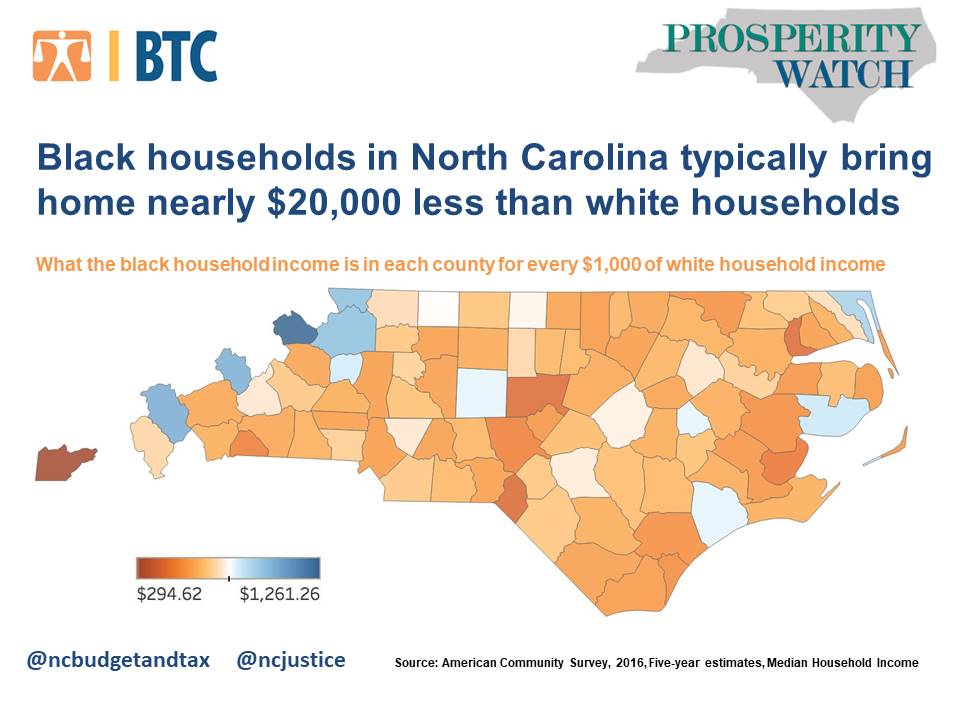Prosperity Watch, Issue 89, No. 1
Aug. 7, 2018
The current economic recovery is failing to close racial income gaps in most North Carolina communities. This failure to deliver broad-based income growth is stunting economic growth broadly and underscores the deeper economic challenges that are going unaddressed in the current economic climate. In an economy driven by consumer demand, these inequalities hold down economic growth overall, making it harder for everyone to achieve prosperity and security.
Even in the urban areas that are often held up as economic success stories, growth is not necessarily translating into equitable household incomes for all North Carolinians. Data from the American Community Survey reveals that these gaps between Blacks and whites are consistent across much of the state, regardless of region. In North Carolina, the Black median household income is approximately $34,000, while the white median household income is above $53,000, a difference of almost $20,000. The gap is even larger in many of the urban areas where economic growth has been the strongest in recent years. In Wake County, for example, median household income for white families exceeds that of Black families by over $33,000. In percentage terms, the gap is even worse in Mecklenburg County. In the state’s most populous county, Black median household income is $32,455, only 44.3 percent of the median white household income.
These disparities translate into wide differences in weekly income, with the typical Black family in many counties trying to make ends meet on less than half of their white neighbors’ income. If white households brought home $1,000 a week, according to median household income data, Black households in Chowan, Chatham, and Scotland counties only earned $435, $431 and $426, respectively. Black households from Cherokee County fared the worst in the state, with median household incomes of $10,417 compared to $35,358 of white households. A weekly paycheck for a Black household would be $295 in Cherokee compared to $1,000 for that of a white one.
This trend is alarmingly consistent across North Carolina. Of the 91 NC counties that could report median household income by race, only in Watauga, Haywood, and Yancey counties do Black households earn as much or more than white households. In 46 counties, Black households earn 60 cents or less for every one dollar white households earn. Of the 12 counties where the Black population exceeds 40 percent, no Black median household income reached even 75 percent of the income earned by white households.
This trend indicates that some of North Carolina’s deepest and most pressing economic challenges are in plain sight. While job growth has been uneven across North Carolina for this entire recovery, these recent data show that even where growth is strong, income inequities remain rampant. If left unaddressed, these inequities will continue to drag the economy down, limiting job growth for everyone and throwing up barriers to prosperity for many North Carolina families.
 Justice Circle
Justice Circle 
